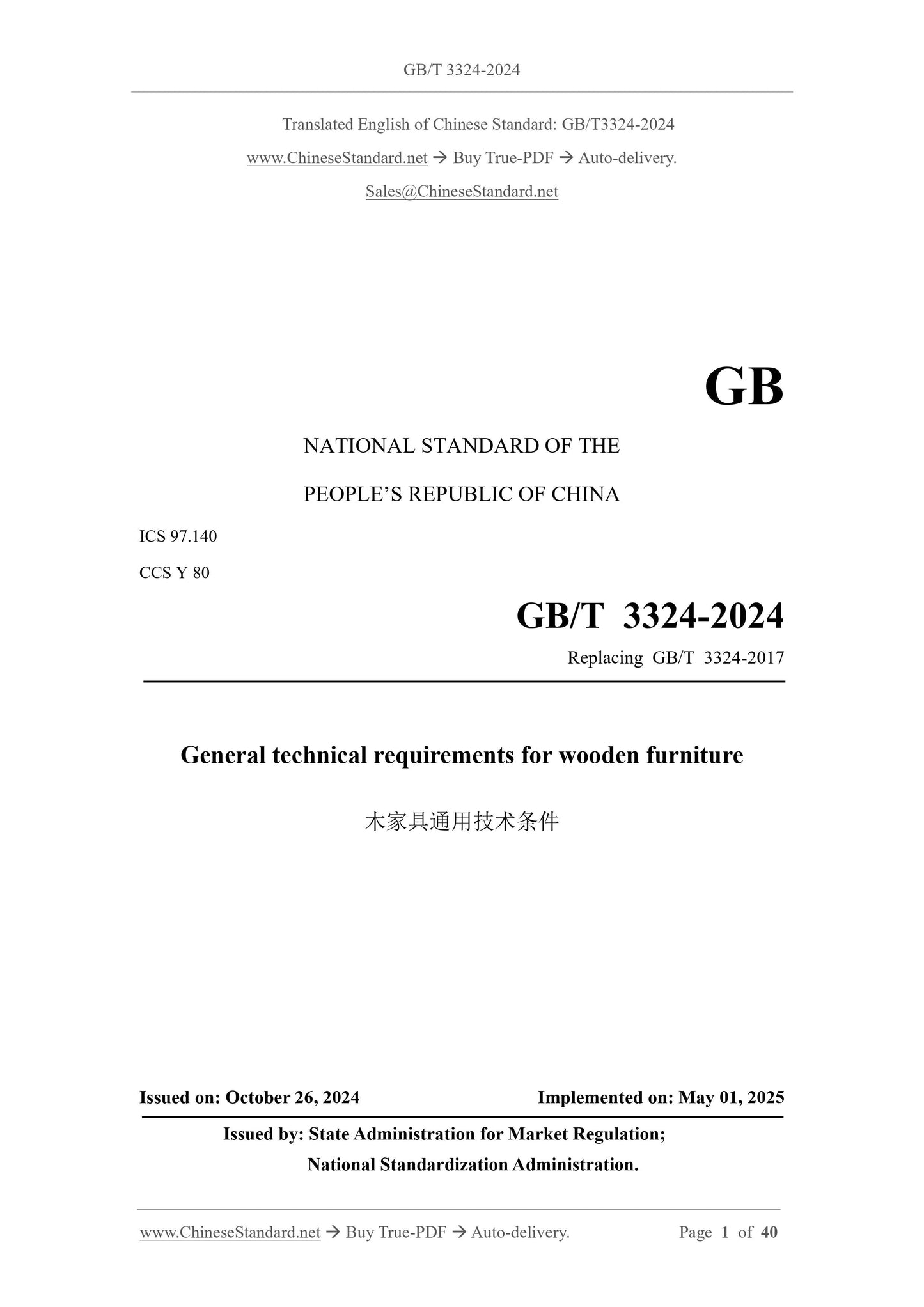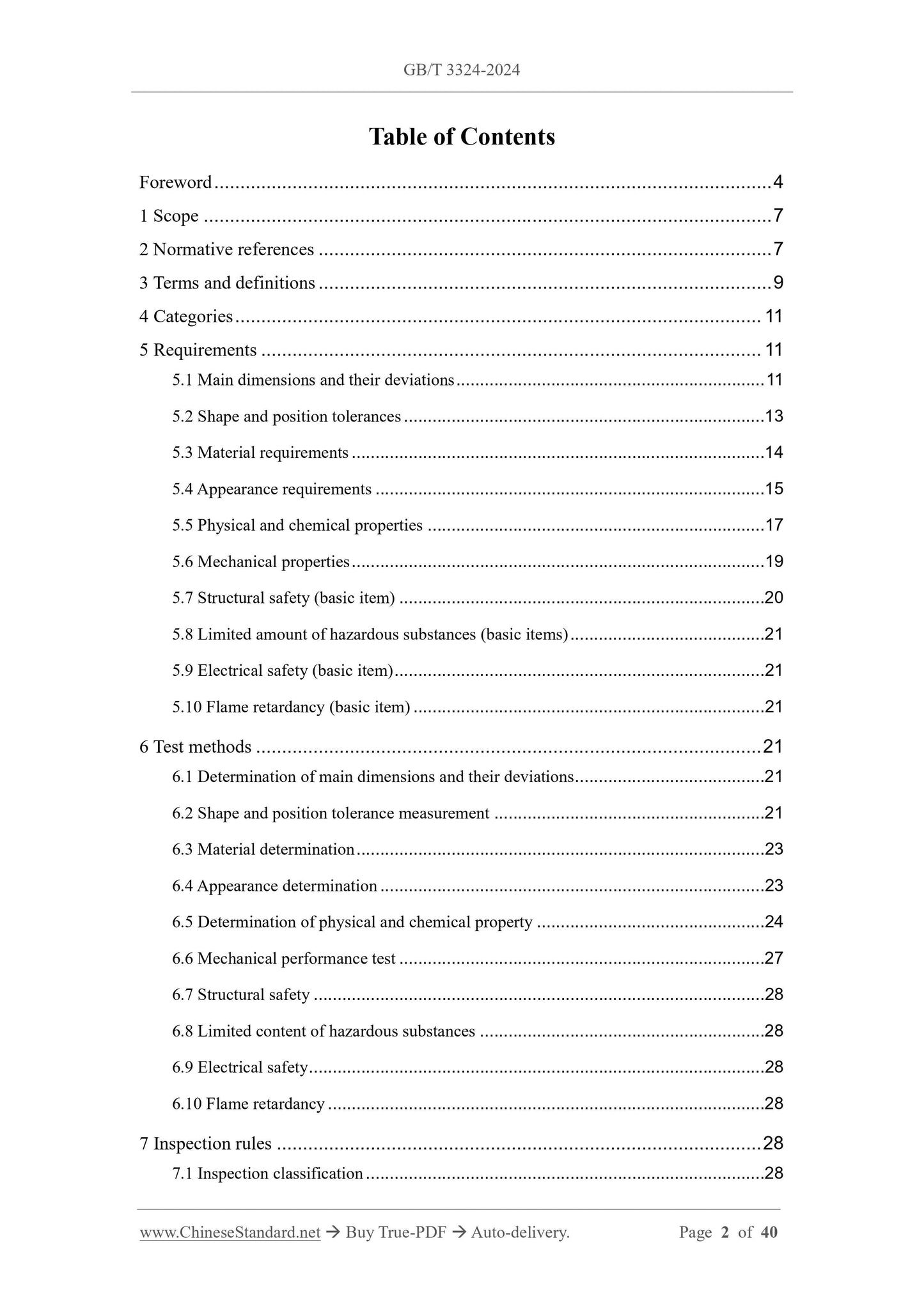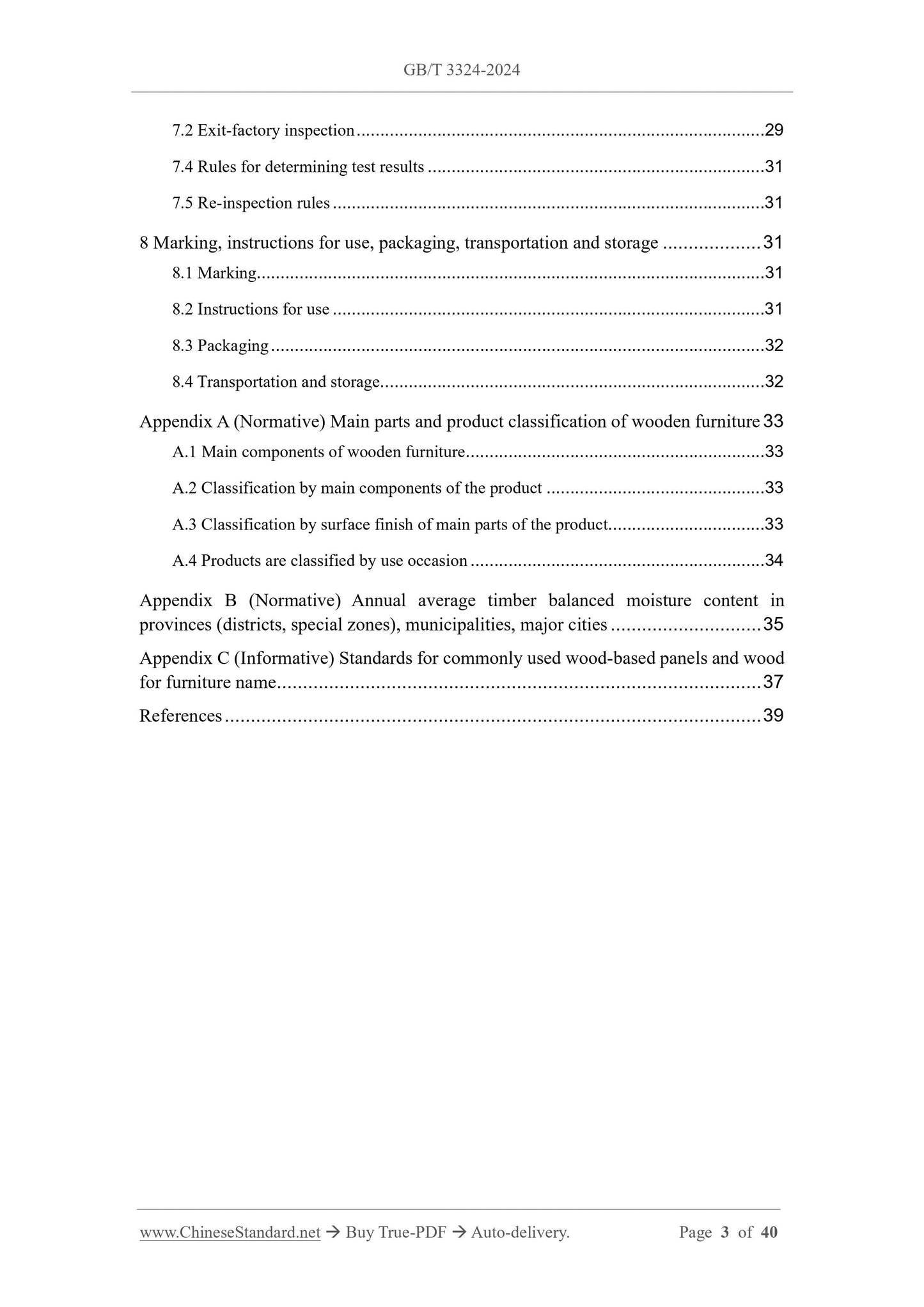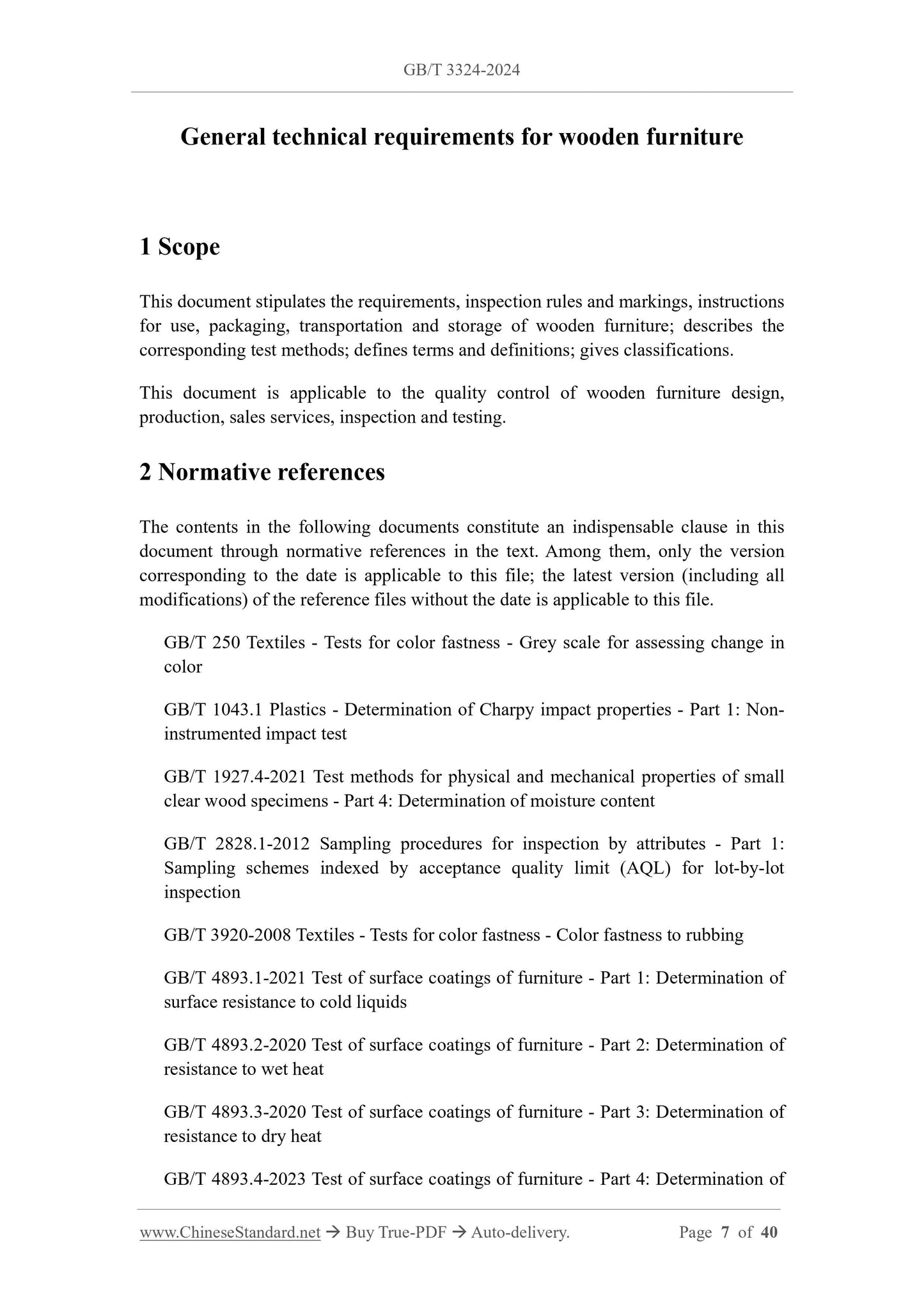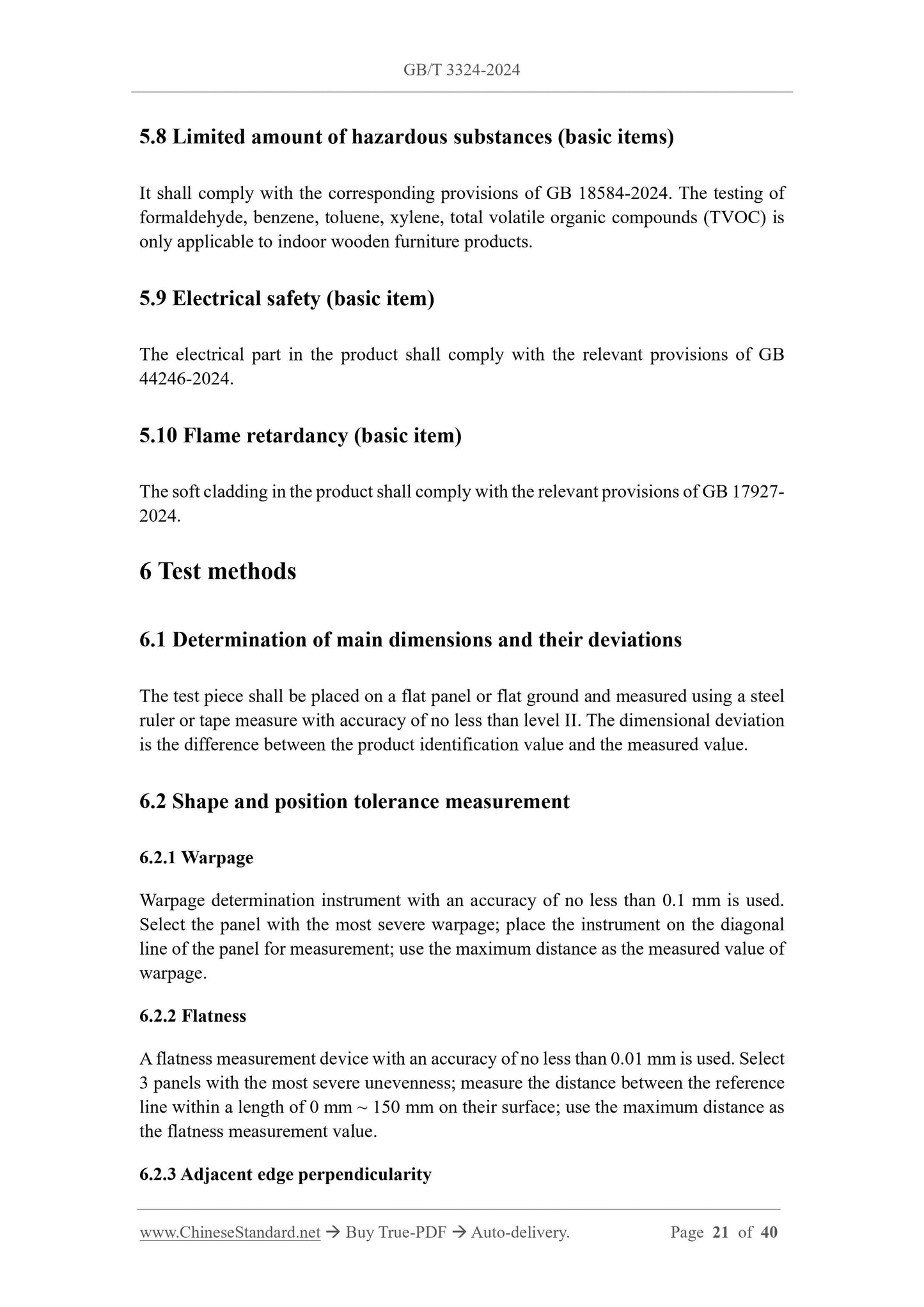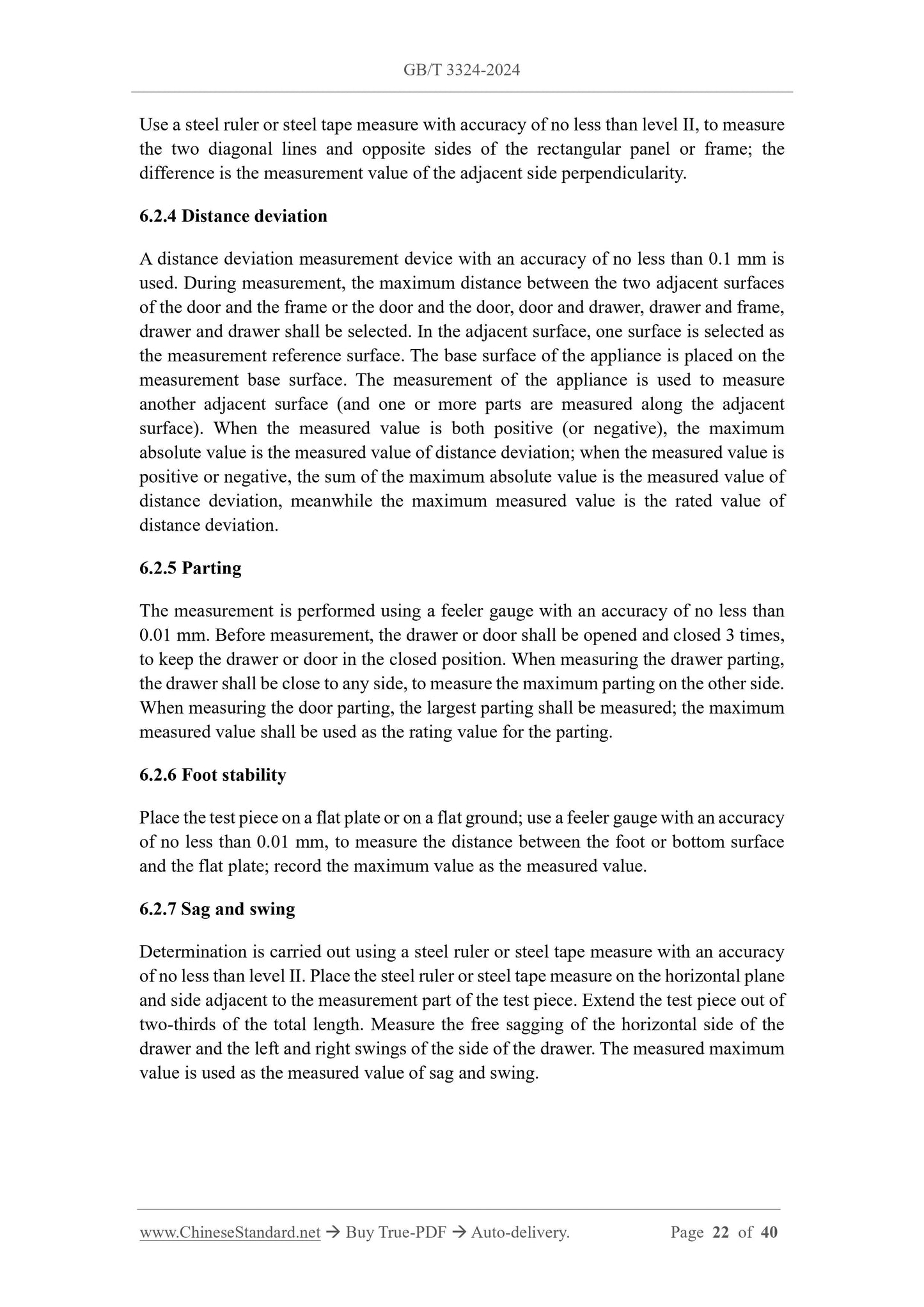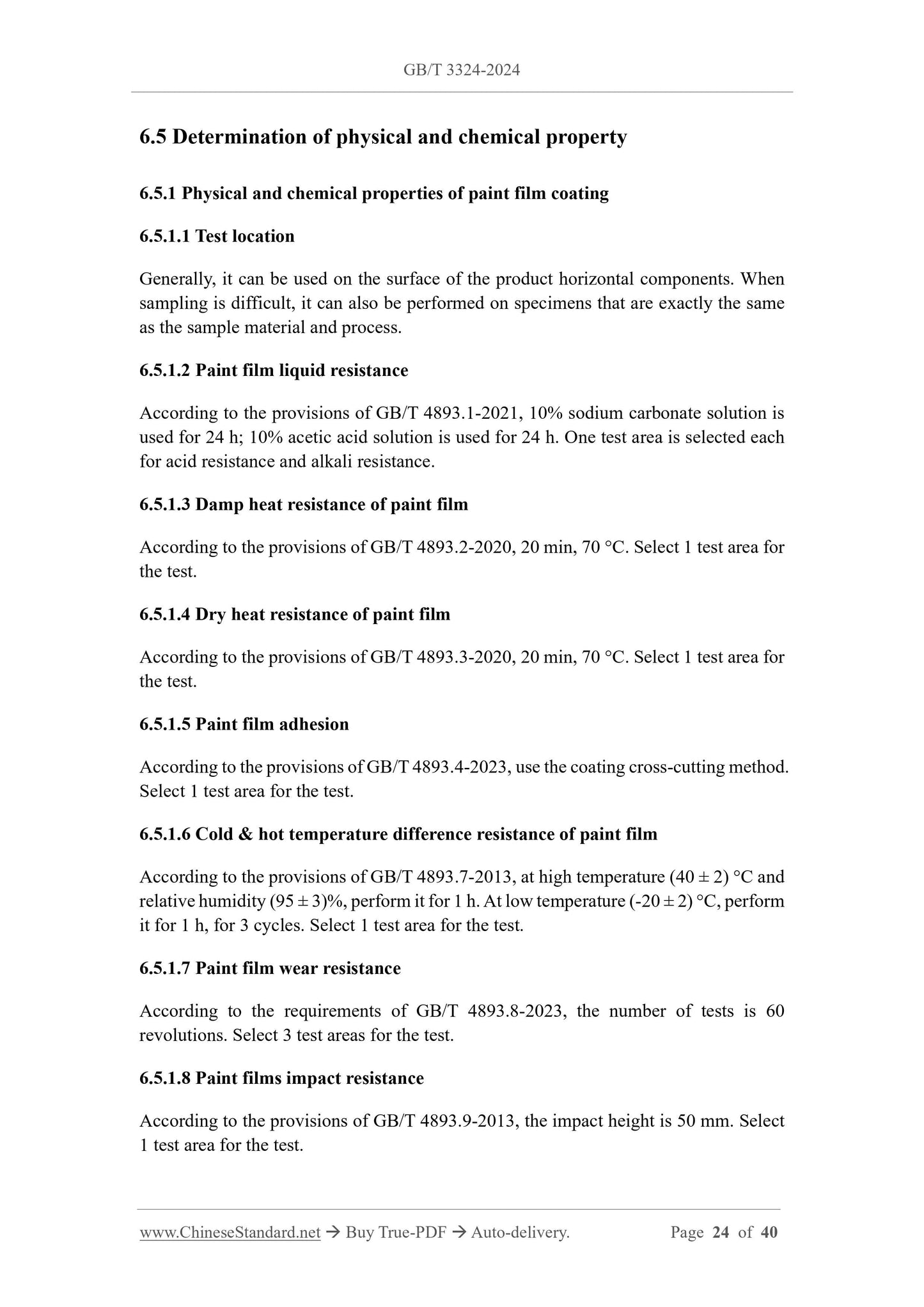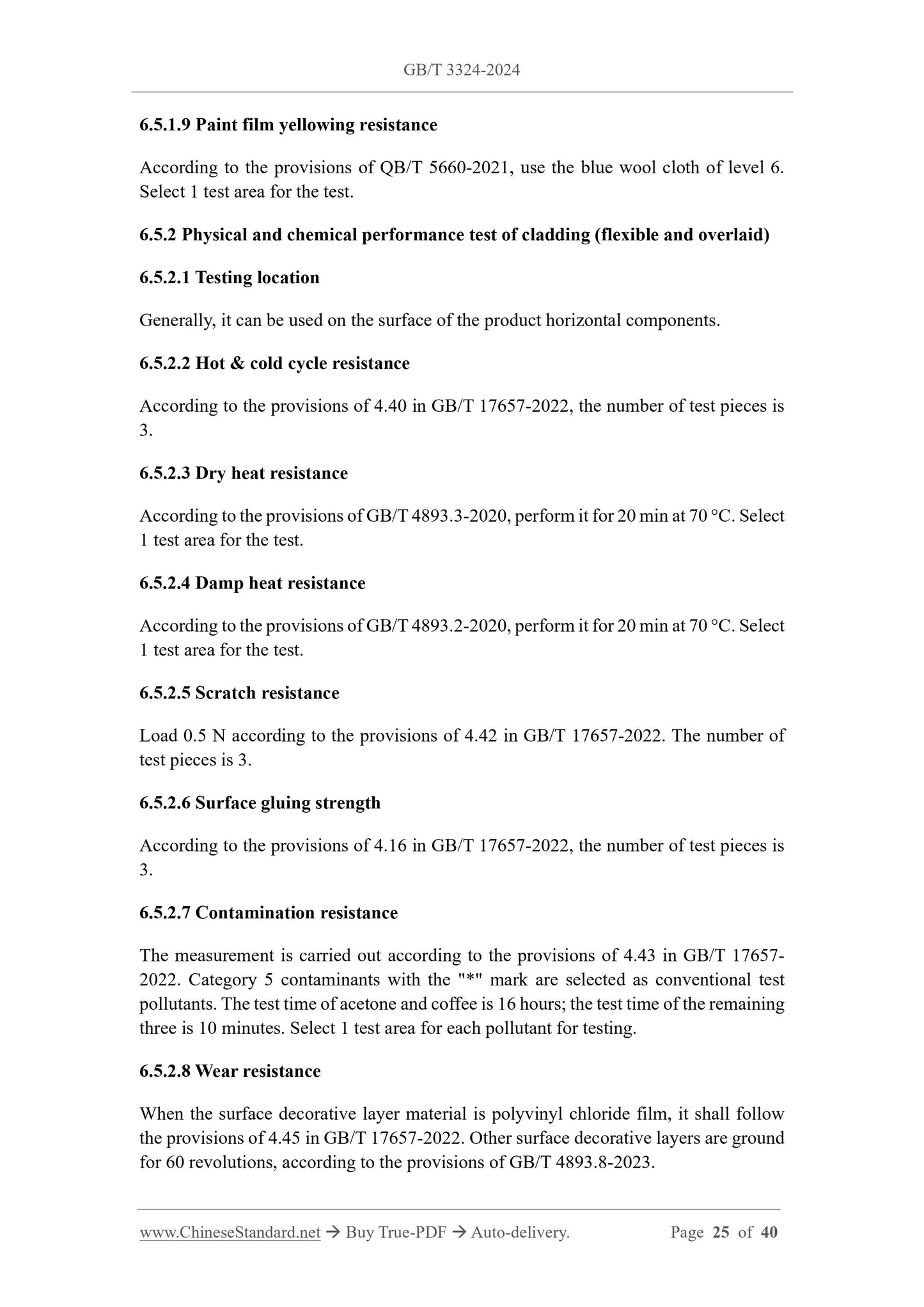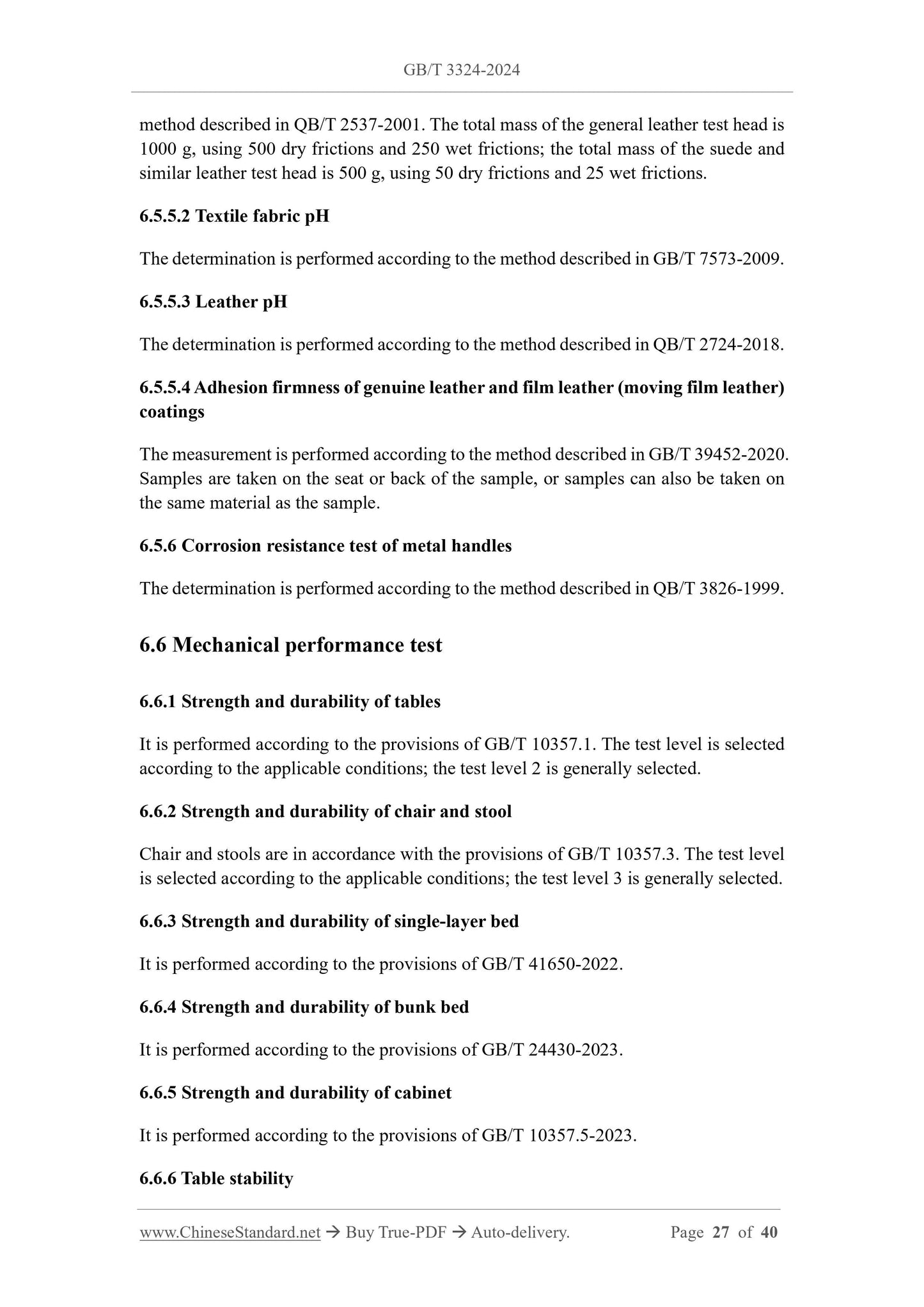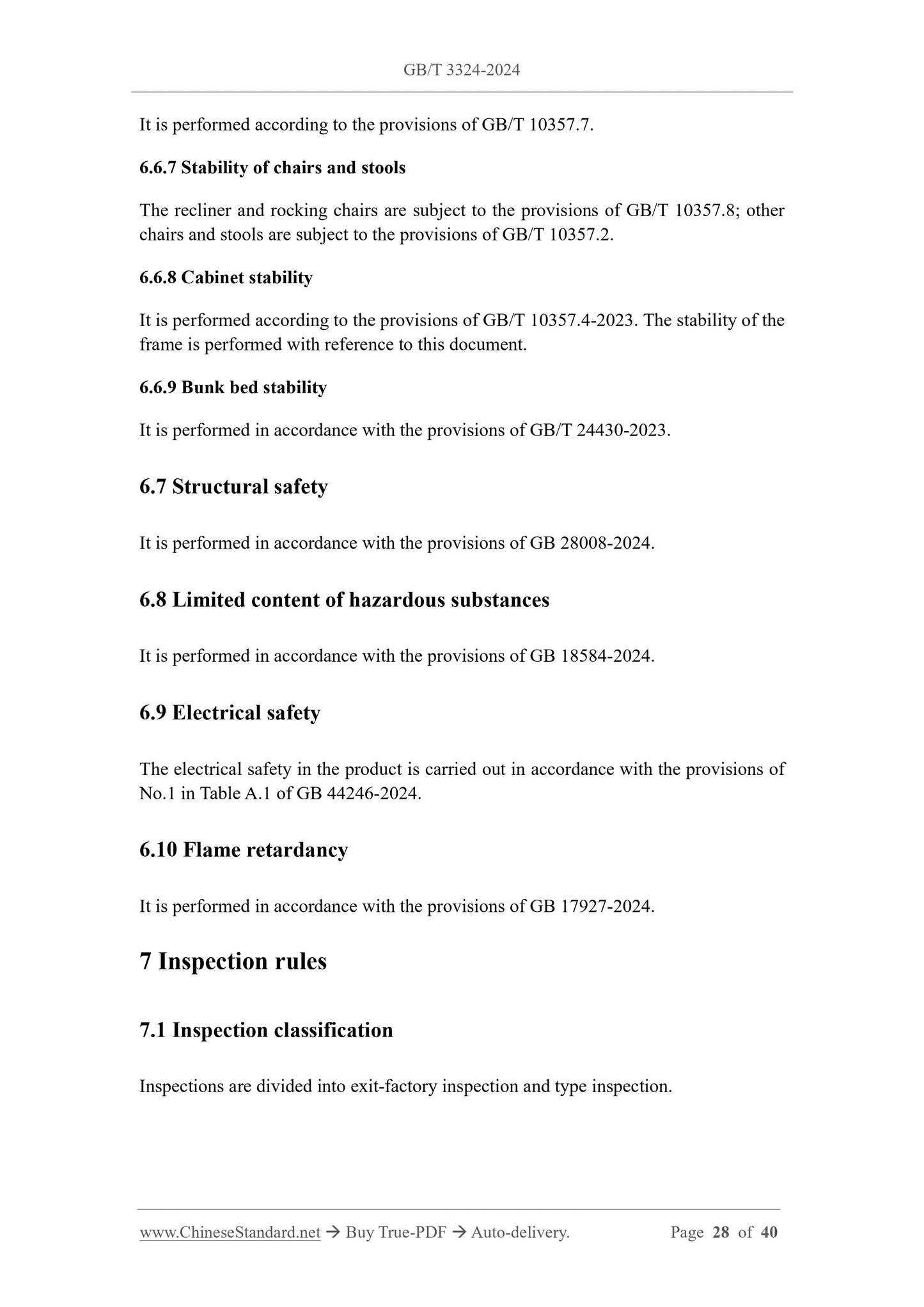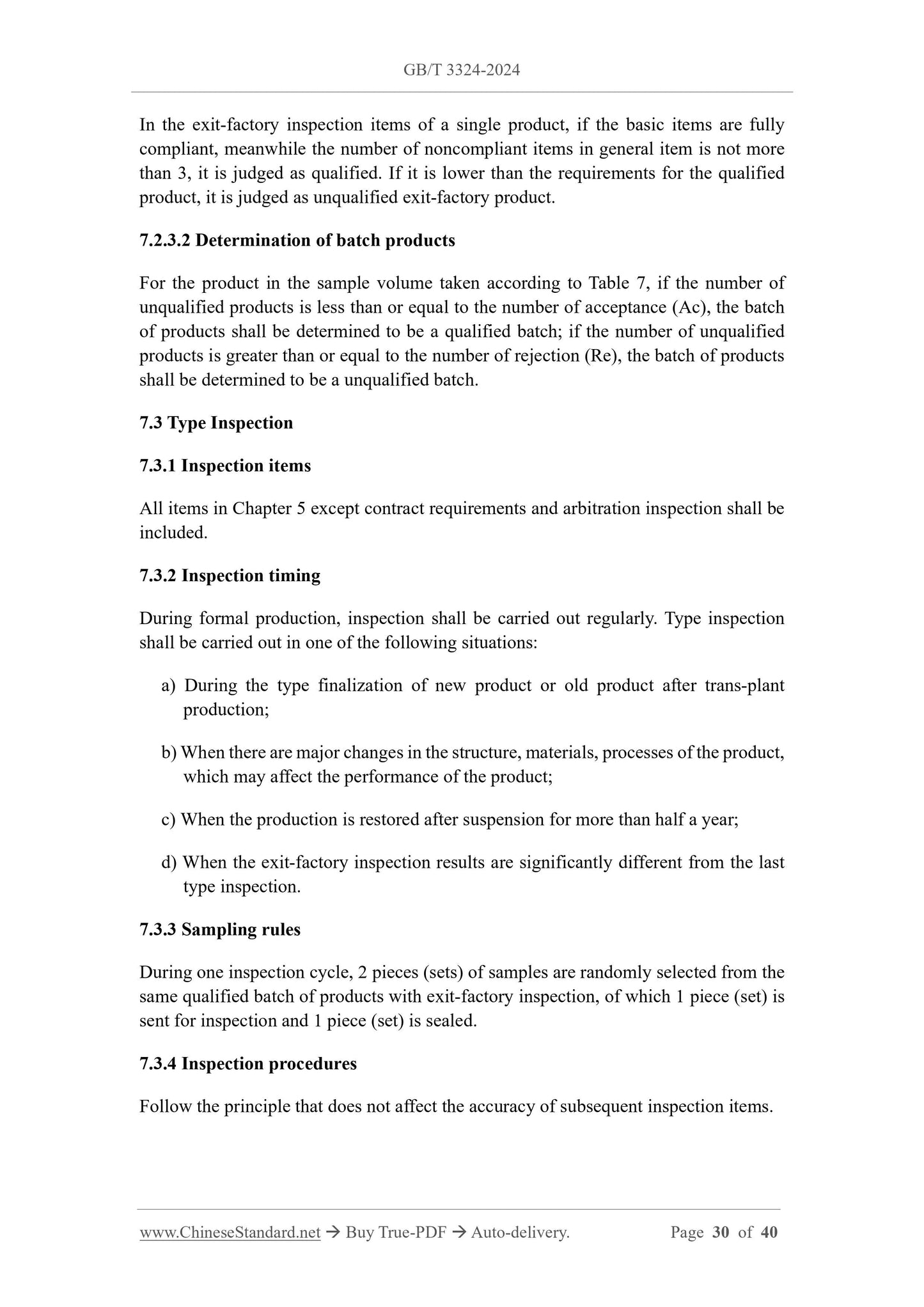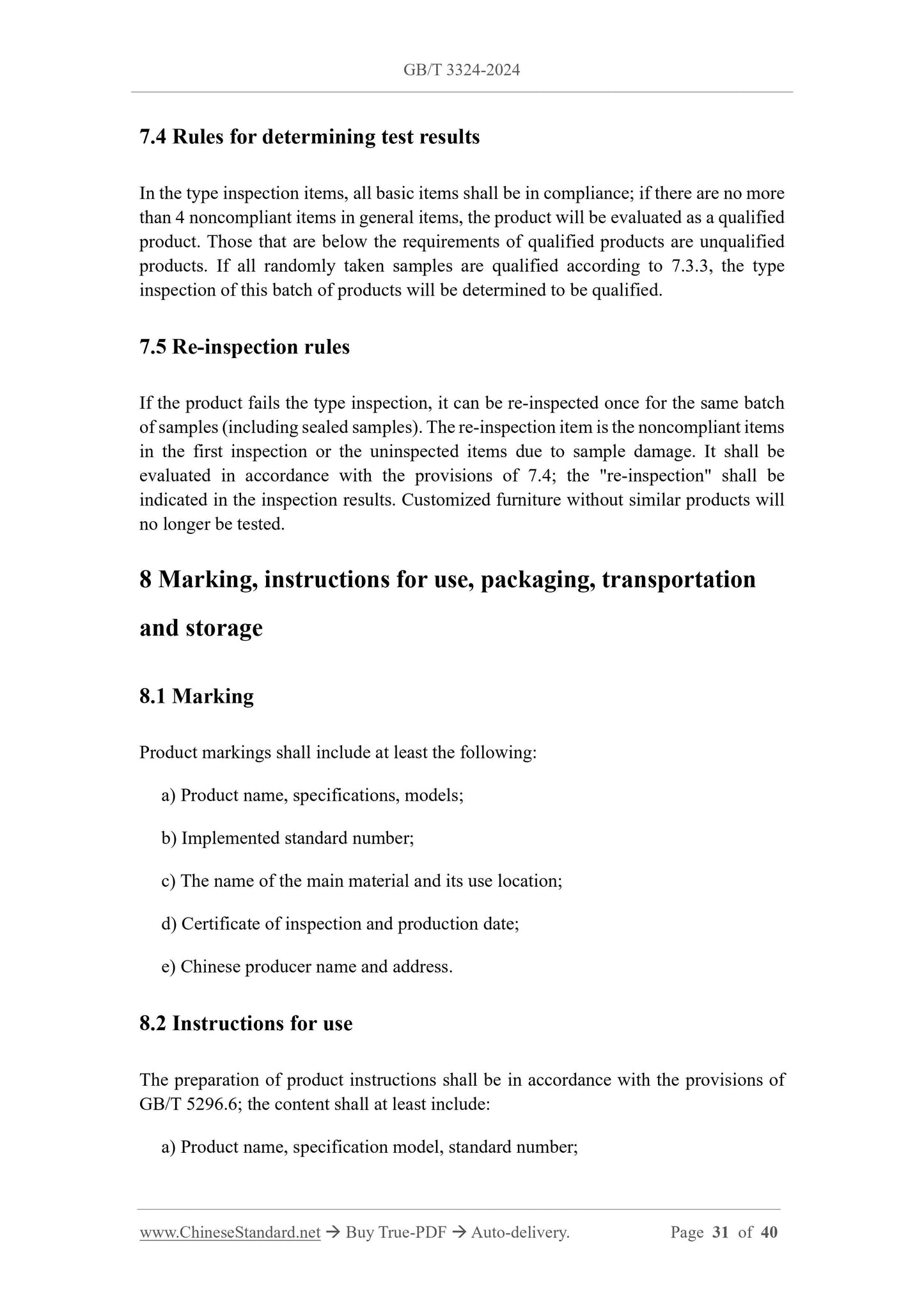1
/
of
12
www.ChineseStandard.us -- Field Test Asia Pte. Ltd.
GB/T 3324-2024 English PDF (GB/T3324-2024)
GB/T 3324-2024 English PDF (GB/T3324-2024)
Regular price
$485.00
Regular price
Sale price
$485.00
Unit price
/
per
Shipping calculated at checkout.
Couldn't load pickup availability
GB/T 3324-2024: General technical requirements for wooden furniture
Delivery: 9 seconds. Download (and Email) true-PDF + Invoice.Get Quotation: Click GB/T 3324-2024 (Self-service in 1-minute)
Newer / historical versions: GB/T 3324-2024
Preview True-PDF
Scope
This document stipulates the requirements, inspection rules and markings, instructionsfor use, packaging, transportation and storage of wooden furniture; describes the
corresponding test methods; defines terms and definitions; gives classifications.
This document is applicable to the quality control of wooden furniture design,
production, sales services, inspection and testing.
Basic Data
| Standard ID | GB/T 3324-2024 (GB/T3324-2024) |
| Description (Translated English) | General technical requirements for wooden furniture |
| Sector / Industry | National Standard (Recommended) |
| Classification of Chinese Standard | Y80 |
| Word Count Estimation | 27,251 |
| Date of Implementation | 2025-05-01 |
| Older Standard (superseded by this standard) | GB/T 3324-2017 |
| Issuing agency(ies) | State Administration for Market Regulation, China National Standardization Administration |
Share
